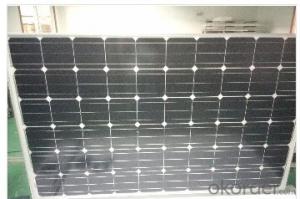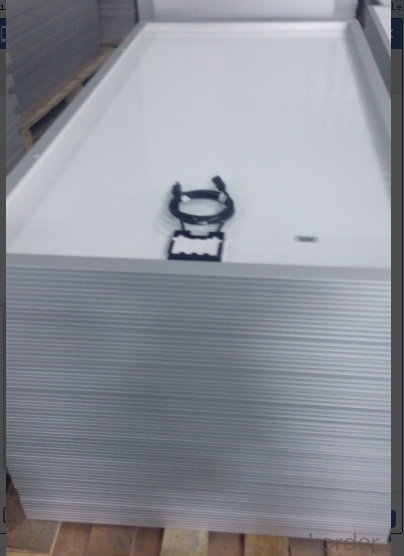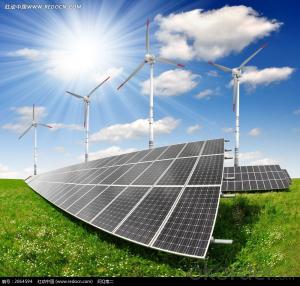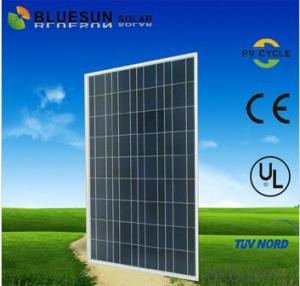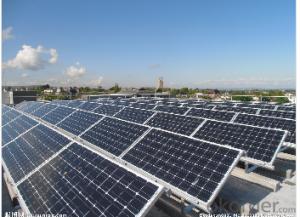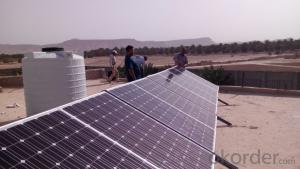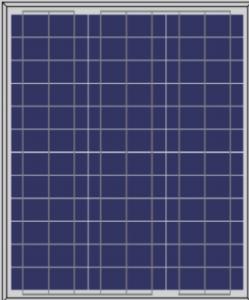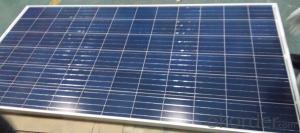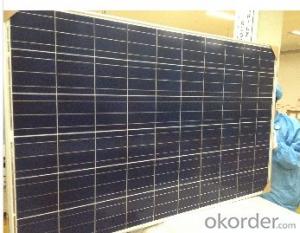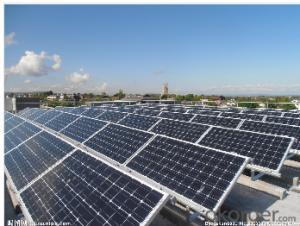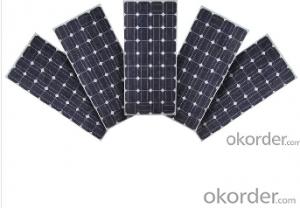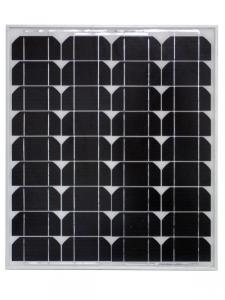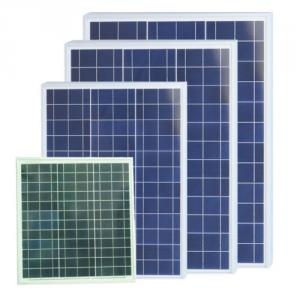LCa Solar Panels Poly Solar Panel Solar Module from CNBM
- Loading Port:
- Shanghai
- Payment Terms:
- TT or LC
- Min Order Qty:
- 1 PCS
- Supply Capability:
- 100000 PCS/month
OKorder Service Pledge
OKorder Financial Service
You Might Also Like
Description:
CNBM Solar is a world-leading and Vertical integrated manufacturer of high-performance with Silicon,
Wafer, Cells, Modules, which convert sunlight into electricity for residential, commercial, and utility-scale
power generation.
The capacity of CNBMSolar is reach to 1GW, and make sure each year our shipment capacity is more
Than 700-800MWs, at the same time, we have set up the largest solar power station with our partner
in Ukraine.
CNBM is a Quality + Service oriented company with“Excellence at Each Step” approach, composed of
the finest components from TUV and IEC-certified partners around the world, CNBM modules consistently
undergo a variety of trials at the company’s Test & Development Centre, ensuring peak performance
capabilities. The company is committed to develop and provide the world with clean and renewable energy
to ease the energy shortages as well as human kind’s impact on the environment.
Temperature and Coefficients
NOCT : 48± 2°c
Temperature coefficient of Voc(%/K) : -0.34
Temperature coefficient of Isc(%/K) : 0.09
Power temperature coefficient(%/K) : -0.37
Packing
Carton: 2 pcs/carton
Pallet: 23 cartons/pallet
Loading Capacity: 552 pcs/20'GP;1242 pcs/40'GP
Quality and Warranty
--Peak power of single module is guaranteed in±3% power tolerance
--3 years limited warranty on material and workmanship
--Limited power warranty:10 years 90% and 25 years 80% limited warranty for minimum power output
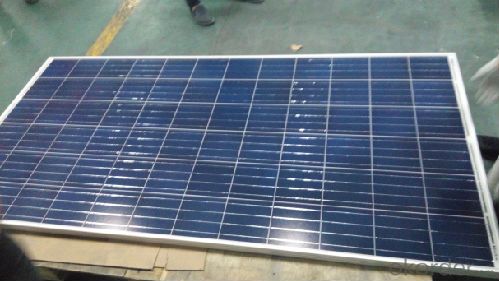
FAQ:What's your products warranty?
No less than 90% within 10yrs and no less
than 80% within 25yrs
- Q: Where can I find good instructions to build a cheap solar panel on my own?
- There okorder /
- Q: What are the advantages of using solar panels?
- There are several advantages of using solar panels. Firstly, solar energy is a renewable source that does not deplete natural resources, making it environmentally friendly. Additionally, solar panels produce clean energy, reducing greenhouse gas emissions and combating climate change. Solar power can also save money in the long run, as it reduces or eliminates electricity bills. Moreover, solar panels require minimal maintenance and have a long lifespan, making them a reliable and cost-effective energy solution. Finally, solar energy can provide energy independence, as it can be generated on-site, reducing reliance on traditional power grids.
- Q: What are the different applications for solar panels for residential use? How many should I purchase if the avg panel produces 80 watts .
- Solar okorder
- Q: How about using Solar Panals to provide the electrical power to separate the H2 from the O? H2 would be fed into the engines carburator like a gas/air mixture ratio, but H2/air mixture ratio instead. How would you control the exact measurements?
- Currently solar panels are rated at about 5 percent efficiency. That means that about 85 percent of the solar energy that is falling on it, is wasted. Electrolysis is also about 67 percent efficient. So the TOTAL amount of solar energy you would have converted into hydrogen is 67 percent of 5 percent. Using my calculator that comes out to: about 0 percent total efficiency. About 90 percent of your solar energy gets wasted in the process. A better alternative to solar panels would be solar powered sterling generators. Sterling engines are EXTERNAL COMBUSTION engines, like the old fashioned steam engine, and can be run off any heat source - including the sun. Heat from the sun is focused using parabolic mirrors, and the efficiency of a sterling engine / generator combination is rated at about 30 percent. Your TOTAL efficiency - both solar sterling and electrolysis combined - would be around 20 percent. If you are dead set on using hydrogen? Even though there are better alternatives? Such as alcohol? Then I would suggest storing it in titanium dioxide pellets. This way you can store the hydrogen, without it being in danger of exploding. You can ALSO ram a hydrogen container like this into a solid brick wall. Once again? Without fear of an explosion. Numerous studies have been conducted on this. As for controlling the exact measurements? Nothing in the air-fuel ratio of a car - - or the timing - which you are also going to have to change - needs to be exact. A good enough approximation will do. As for how you get your measurements? You need to compare the density of gasoline vapor with hydrogen gas. A comparison of the molecular weight of gasoline - - as compared to the molecular weight of hydrogen - should get you started in the right direction for this.
- Q: Do I just run the wire from the panel into the charge controller and then to the battery AND can I simultaneously draw energy from the battery while it is being charged by the panel?Is it as simple as hooking it up like that?
- The solar panel wires go to the charge controller. The charge controller wires go to the battery. You can also run wires from battery to a load ONLY IF it is DC load. If any AC loads, then you need a inverter to change dc to ac.
- Q: how long till a 50 watt solar panel pays itself off in buffalo, ny if its $500. i have national grid and heres the link to the rates. i am residential.
- the Department of Energy has a ' solar hours calculator for locations around the US factoring in hours of sunlight.....the other factor is how perpendicular to the sun the panel is.....as a wild guess I'd say Buffalo's solar hours factor is about 3....which means as an average over 365 days you get 3 hours a day of maximum ( 50 watts ) output. So 3 x 50 x 365 = 64.25 kWh a year. At, say, 5 cents a kWh, you're making $24.63 a year worth of electricity. See why the houses of upstate New York..let alone Ohio or Virginia or Georgia.....aren''t covered in panels?
- Q: Can solar panels be installed on mountain huts or lodges?
- Yes, solar panels can be installed on mountain huts or lodges. In fact, mountainous regions with ample sunlight can be ideal locations for solar panel installations. These panels can harness the sun's energy and convert it into electricity, providing a sustainable and reliable source of power for the huts or lodges.
- Q: What makes them stop working after a while?
- You can search on solar panel failure mechanisms for scholarly works. Amorphous silicon thin-film panels go through an annealing, and power drops off after a couple years. This includes most of those flexible rubber mat type panels. That's why those are not used on serious installations. Serious panels intended for rooftop service generally come with a 25-year warranty, suggesting that the technology is more reliable than your washer, dryer, TV, computer, dishwasher, or water heater. One brand of panel had trouble about 0 years ago, but the manufacturer replaced all that were turned in, even paying shipping both ways. It was a problem with that particular model, not the technology. Our polysilicon panels have been on the roof for 3 years, now, and I've seen no sign of wear, yet, either electrically or mechanically.
- Q: Do solar panels require a battery for storage?
- No, solar panels do not require a battery for storage. Solar panels generate electricity directly from the sunlight and can be connected to the electrical grid to supply power during the day. However, using a battery with solar panels allows for energy storage, ensuring a continuous power supply even when the sun is not shining or during power outages.
- Q: How much would it cost to make an average size house be able to depend on solar panels for all of its power?How many solar panels would you need and wear would you put them? Would the roof be large enough to support the panels needed?Do solar panels work well in higher latitudes like northern USA or southern Canada? Can you power your house for the whole year if you live in these environments? What kind of maintenance do solar panels require?
- I can begin to point you in the right direction. It is a very complicated thing you are asking about. Solar panels produce direct current, in order to store that power for use at night, and on cloudy days, you need a lot of batteries. Those batteries store direct current. In order to use that direct current to power your refrigerator, you need to put it through a thing called an inverter. The inverter produces AC from DC. You may have seen one for sale to plug into the lighter in a car so you can use things that require AC in your car. The inverter looses power doing the conversion. Over time, you can purchase direct current appliances, and make the system more efficient. Years ago, a decision was made to go with AC because of transmission issues (you can move AC across a wire a long distance, and DC is more difficult to move). Many appliances convert AC to DC internally to do their work, but such appliances are expensive. Have I answered your question? Not really. You should understand your question better though.
Send your message to us
LCa Solar Panels Poly Solar Panel Solar Module from CNBM
- Loading Port:
- Shanghai
- Payment Terms:
- TT or LC
- Min Order Qty:
- 1 PCS
- Supply Capability:
- 100000 PCS/month
OKorder Service Pledge
OKorder Financial Service
Similar products
Hot products
Hot Searches
Related keywords
